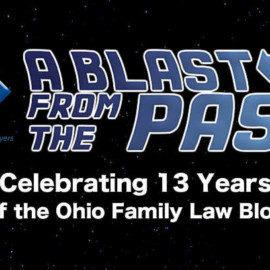
Ohio No Longer Recognizes Common Law Marriage After 1991
 I’m sure most, if not all, have at least heard of the term “common law marriage“. By legal definition, a common law marriage is a marriage that doesn’t quite rise to the level of a legal, formal marriage, but is created by the two parties, who co-habit together and hold themselves out to their community as married. A legal marriage has a licensing component, and a certain level of solemnization requirement that might not be met by a common law marriage.
I’m sure most, if not all, have at least heard of the term “common law marriage“. By legal definition, a common law marriage is a marriage that doesn’t quite rise to the level of a legal, formal marriage, but is created by the two parties, who co-habit together and hold themselves out to their community as married. A legal marriage has a licensing component, and a certain level of solemnization requirement that might not be met by a common law marriage.
While common law marriages aren’t scarce, they are less common than they used to be. Prior to the widespread availability of easy transportation and the internet, people in remote areas of the country, especially out west, would need to wait around for the circuit-riding pastor to arrive in order to officially wed. Without a formal schedule, people began to pair off and held their own ceremonies before their family and friends and would hold themselves out in the community as married, even without all of the official paperwork being filed. After so long, no one really recalled that so-and-so weren’t actually legally married by the pastor.
Marriage Is Easier To Obtain In The Modern Era
Fast forward to the modern era, where even yours truly is licensed by the power of the internet and some paperwork with the state, getting married is easier than ever, especially in states like Ohio where there isn’t a mandatory waiting period or series of medical tests. Thus, in 1991, Ohio, by statute, decided to no longer recognize common law marriage, which is what the majority of states had done.
However, Ohio still recognizes common law marriages that began before October 10, 1991, and have not been terminated by death, divorce, dissolution, or annulment. Thus, these old common law marriages are very much treated like ceremonial legal marriages, and those wanting to end one will need to go through the same divorce or dissolution processes. That requirement took effect on May 7, 2004.
But what if your common law relationship began in Ohio after October 10, 1991, and it is time to break up? Filing for divorce has no point, because a divorce ends only a legally recognized marriage. Thus, Ohio wouldn’t legally have the authority to Order spousal support, divide property, or deal with other common divorce issues. Thus, you’ll need to pursue a civil action in court to resolve property disputes, rather than a domestic relations court.
Civil Action Complex In Common Law Cases
This process can be awkward and difficult legally. Also, remember that under the full faith and credit provision that Ohio Courts could divorce you (even if your common law relationship started after October 10, 1991) if your common law marriage was legal in the state where you cohabited initially.
This can become a complex legal question. If you are in this type of relationship, be sure to discuss your specific factual situation with an experienced divorce lawyer. Don’t try to evaluate this on your own.
PUBLISHER’S NOTE: I want to thank our summer legal extern, Lily Mann, for her help researching and writing this blog article. Lily will be graduating from the University of Dayton School of Law in 2020. Thanks Lily!
© 2019, Ohio Family Law Blog. All rights reserved.

Attorney Robert “Chip” Mues has been focusing his legal practice throughout Southwest Ohio primarily in divorce and family law matters since 1978. Chip is passionate about family law and has proudly published the Ohio Family Law Blog since 2007. In addition, he previously managing the Dayton law firm of Holzfaster, Cecil, McKnight & Mues LPA until it dissolved on December 31, 2024. He recently has founded MUESLAW in 2025. To learn more about him or MUESLAW, visit www.MuesLaw.com. Appointments are available in person, over the phone or by Zoom. Call us at 937 293-2141.




